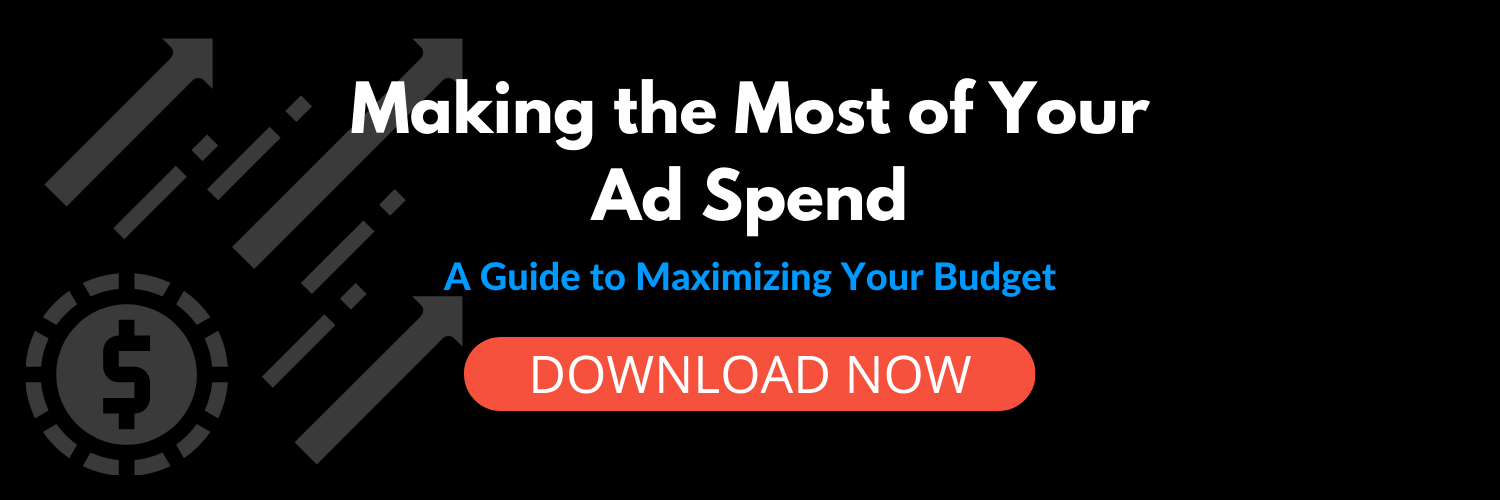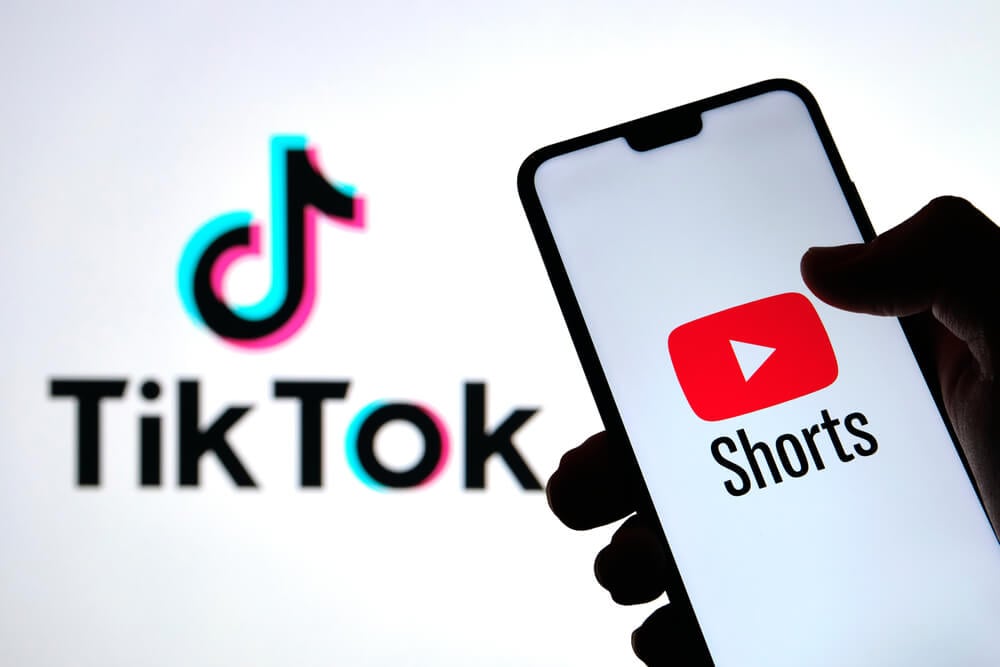4 Tips for Maximizing Your Return on Ad Spend

In the world of marketing, two terms get thrown around quite a bit: ROI and ROAS. ROI stands for "return on investment," and ROAS stands for "return on ad spend." While at first glance, it may seem like both of these metrics are measuring the same thing, the reality is that there are significant differences between them.
For example, ROI measures the entire investment cost in a particular marketing campaign, whereas ROAS has a more narrow focus and only considers advertising costs. In addition, ROI is often more valuable as a measure of long-term profitability, whereas ROAS is a valuable metric when gauging short-term strategic growth.
Let's discuss how you can effectively calculate your ROAS and four tips for increasing return on ad spend.
Calculating ROAS: What Should I Aim For?
Remember that there's a clear difference between ROI and ROAS: ROI is the return on total investment, whereas ROAS is the return on specific ad spend (that is, ad spend without the inclusion of retainer fees, overhead costs, and so forth).
You can calculate ROAS as a percentage by using this simple formula:
ROAS = (Revenue generated by advertising / cost of advertising) x 100
What constitutes a "healthy" ROAS will depend on several factors, such as your industry, the market's current condition, and your advertising goals. That being said, if your campaign yields a "low" ROAS, that doesn't necessarily mean you should scrap it altogether. In many cases, a few tweaks to the campaign may provide a drastic improvement in results.
With that in mind, let's discuss four ways to boost your ROAS.
4 Tips to Boosting ROAS
1. Improve Audience Targeting
You can improve your ROAS by focusing on the segments of your consumer base that are converting at the highest rates. Of course, to do that, you'll need to cast a wider net at the start and then capture specifics about who your high-value customers are, which channels they use, and what drives them to make their final purchase decisions.
In addition, you'll need to leverage the target capabilities associated with SEO and programmatic advertising. For example, Facebook Ads enable a highly targeted approach to social media marketing, and Local Campaigns on Google can help you attract a higher percentage of nearby consumers.
The point is, choose the platforms where your ideal customers are located and then use their targeting features to reach them more efficiently.
2. Eliminate Underperforming Ads
At times, you may have to drop a certain ad entirely if it's not performing up to expectations. Before you make a rash decision, though, be sure to thoroughly analyze your campaign as a whole, as well as your individual ads. Perform some A/B tests to see if a minor adjustment is all that is needed. Depending on the marketing medium, also consider how many people were reached, click-through rates, leads generated, or other metrics to decide if an ad should be nixed.
If you determine beyond a reasonable doubt that one particular ad or campaign is not working, don't hesitate to pull the trigger and discontinue it. You want to put your money into the ads that are getting good results.
3. Pinpoint Other Matters of Contention
You may need to examine adjacent issues that could indirectly affect the performance of your ads. For example, what if your ROAS is low, but your conversion rates are high? In that scenario, perhaps your product is simply priced too low, and that's why you're not generating revenue as expected.
On the other hand, if your click-through rates are high but your conversions are low, your products may be priced too high.
Some other potential "bottleneck indicators" you should keep an eye on include:
- Abandoned shopping carts
- Poor UI/UX (UI = User Interface, UX = User Experience)
- Unclear or confusing CTAs
4. Perfect Your SEO Keywords
To get the biggest bang for your buck, it's important to continually refine the SEO keywords that you bid on. Broad, trending keywords are attached to traffic that your larger competitors will quickly funnel their way. In contrast, highly specific, niche keywords can help you target a smaller demographic with high potential value and low levels of competition.
If your business is geographically based, use location-specific keywords to attract nearby consumers to your company. Many people search for items or services according to their current location. You can take advantage of this by using "location-rich" keywords and thus show up as one of the top search results for those queries.
Maximizing Your ROAS Results in Business Growth
It's true that maximizing your return on ad spend can be a challenging endeavor. However, the results of doing so are well worth the effort. If refining your ROAS seems a bit overwhelming to you, consider partnering with an experienced digital agency that can help you identify and correct problems in your ad spend process. If you do, you'll almost certainly see a surge in your ROAS, and your business will benefit both now and in the future.
Related Posts
Unveiling the Secrets: CoxNext Experts Answer 5 Vital Questions on Enrollment Marketing!
May 24th, 202323 Retargeting Statistics You Need to Know
April 26th, 2023Why Partner With Multiple Agencies When One Is All You Need?
April 20th, 202310 Key Tips for Using Video Shorts in Social Media Marketing
April 12th, 20238 Reasons to Use Video Shorts in Marketing
April 5th, 2023What is a White Labeling Service and Why Should You Consider It?
March 29th, 2023What is the Future of TV Advertising?
March 22nd, 2023Marketing Solutions for Every Step of the Buyers’ Journey
March 13th, 20237 Ways to Know Your Marketing Isn’t Working
February 28th, 2023Categories
- Marketing Strategy (90)
- Digital Advertising (47)
- Digital Marketing (28)
- Content Marketing (17)
- OTT (16)
- ROI (13)
- Content Creative (12)
- Agency Partnerships (11)
- Social (10)
- Video (8)
- COVID-19 (7)
- Advanced Data (6)
- Research (6)
- Technology (6)
- Cox Enterprises News (5)
- Generational Marketing (5)
- Industry: Travel (5)
- Industry: eCommerce (5)
- Advertising Budget (4)
- Industry: Higher Education (4)
- Social Media Marketing (4)
- E-commerce (3)
- Podcasts (3)
- Recruitment Marketing (3)
- Search (3)
- Social Media (3)
- Branding (2)
- Inclusive Marketing (2)
- Industry: Cannabis (2)
- Industry: Home Improvement (2)
- marketing budget (2)
- CoxNext News (1)
- Industry - Automotive (1)
- Industry: Healthcare (1)
- Influencer Marketing (1)
- Podcast Advertising (1)
- Privacy (1)
- working with an agency (1)








.jpg)
.jpg)
%20(1).jpg)
